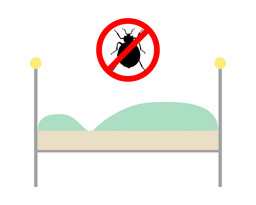Categories
- Bed Bug
- Bed Bug Cream
- BED BUG DATABASE
- Bed Bug Home Remedies
- Bed Bug Oil
- Bed Bug Remedies
- Bed Bug Spray
- Bed Bugs New York
- Bed Bugs Vancouver
- Bed Bugs World
- Bed Bugs American Samoa
- Bed Bugs Canada
- Bed Bugs Guam
- Bed Bugs North Mariana islands
- Bed Bugs Puerto Rico
- Bed Bugs United States
- Bed Bugs Alabama
- Bed Bugs Alaska
- Bed Bugs Arizona
- Bed Bugs Arkansas
- Bed Bugs California
- Bed Bugs Colorado
- Bed Bugs Connecticut
- Bed Bugs Delaware
- Bed Bugs Florida
- Bed Bugs Georgia
- Bed Bugs Hawaii
- Bed Bugs Idaho
- Bed Bugs Illinois
- Bed Bugs Indiana
- Bed Bugs Iowa
- Bed Bugs Kansas
- Bed Bugs Kentucky
- Bed Bugs Louisiana
- Bed Bugs Maine
- Bed Bugs Maryland
- Bed Bugs Massachusetts
- Bed Bugs Michigan
- Bed Bugs Minnesota
- Bed Bugs Mississippi
- Bed Bugs Missouri
- Bed Bugs Montana
- Bed Bugs Nebraska
- Bed Bugs Nevada
- Bed Bugs New Hampshire
- Bed Bugs New Jersey
- Bed Bugs New Mexico
- Bed Bugs New York
- Bed Bugs North Carolina
- Bed Bugs North Dakota
- Bed Bugs Ohio
- Bed Bugs Oklahoma
- Bed Bugs Oregon
- Bed Bugs Pennsylvania
- Bed Bugs Rhode Island
- Bed Bugs South Carolina
- Bed Bugs South Dakota
- Bed Bugs Tennessee
- Bed Bugs Texas
- Bed Bugs Utah
- Bed Bugs Vermont
- Bed Bugs Virgin Islands
- Bed Bugs Virginia
- Bed Bugs Washington
- Bed Bugs Washington DC
- Bed Bugs West Virginia
- Bed Bugs Wisconsin
- Bed Bugs Wyoming
- BedBug Removal
- BedBugs in Michigan
- Canada Bed Bugs
- Do it yourself Bed Bug
- Exterminator Bed Bugs
- Health
- Pest Inspection
- Toronto Bed Bugs
- Welcome to Bed Bugs
Registry Sites List
- Bronx Bed Bug Registry Infestation Maps, Residential And Hotel
- Brooklyn Bed Bug Registry Infestation Maps, Residential And Hotel
- Manhattan Bed Bug Registry Infestation Maps, Residential And Hotel
- Nyc Bed Bug Registry Infestation Maps, Residential And Hotel
- Queens Bed Bug Registry Infestation Maps, Residential And Hotel
- Staten Island Bed Bug Registry Infestation Maps, Residential And Hotel
Recommended Sites
Daily Archives: December 4, 2022
News Links:
Adult Bed Bugs
Adult Bedbugs
 Adult bed bugs are about 3/16-inch long and reddish-brown, with oval, flattened bodies. They are sometimes mistaken for ticks or cockroaches. The immature's (nymphs) resemble the adults, but are smaller and lighter in color. Bed bugs do not fly, but can move rapidly over floors, walls, ceilings and other surfaces. Female bed bugs lay their eggs in secluded areas, depositing 1, 2 or more eggs per day and hundreds during a lifetime. The eggs are tiny, whitish, and hard to see on most surfaces without magnification (individual eggs are about the size of a dust speck). Their flat shape enables them to readily hide in cracks and crevices. The body becomes more elongate, swollen, and dark red after a blood meal. Bed bugs have a beaklike piercing-sucking mouthpart system. The adults have small, stubby, nonfunctional wing pads. Newly hatched nymphs are nearly colorless, becoming brownish as they mature. Nymphs have the general appearance of adults. Eggs are white and about 1/32 inch long.
Adult bed bugs are about 3/16-inch long and reddish-brown, with oval, flattened bodies. They are sometimes mistaken for ticks or cockroaches. The immature's (nymphs) resemble the adults, but are smaller and lighter in color. Bed bugs do not fly, but can move rapidly over floors, walls, ceilings and other surfaces. Female bed bugs lay their eggs in secluded areas, depositing 1, 2 or more eggs per day and hundreds during a lifetime. The eggs are tiny, whitish, and hard to see on most surfaces without magnification (individual eggs are about the size of a dust speck). Their flat shape enables them to readily hide in cracks and crevices. The body becomes more elongate, swollen, and dark red after a blood meal. Bed bugs have a beaklike piercing-sucking mouthpart system. The adults have small, stubby, nonfunctional wing pads. Newly hatched nymphs are nearly colorless, becoming brownish as they mature. Nymphs have the general appearance of adults. Eggs are white and about 1/32 inch long.
When first laid, the eggs are sticky, causing them to adhere to surfaces. Newly hatched nymphs are straw-colored and no bigger than a pinhead. As they grow, they molt (shed their skin) five times before reaching maturity. A blood meal is needed between each successive molt. Under favorable conditions (70-80°F), the bugs can complete development in as little as a month, producing three or more generations per year. Cooler temperatures or limited access to blood extends the development time. Bed bugs are resilient. Nymphs can survive months without feeding and the adults for more than a year. Infestations therefore are unlikely to diminish by leaving premises unoccupied. Although C. secularism prefers feeding on humans, it will also bite other warm-blooded animals, including dogs, cats, birds and rodents.

 Adults feed once a week on average but feed many times during their four-month or longer life span. Adults usually live for around 10 months, but can live for a year or more. In a home, where the environment is conducive to their reproduction (their ideal breeding temperature is between 21° to 28°C), bed bugs can breed year round. Adult bed bugs have been known to survive for as long as 550 days (over a year and a half!) without feeding.
Adults feed once a week on average but feed many times during their four-month or longer life span. Adults usually live for around 10 months, but can live for a year or more. In a home, where the environment is conducive to their reproduction (their ideal breeding temperature is between 21° to 28°C), bed bugs can breed year round. Adult bed bugs have been known to survive for as long as 550 days (over a year and a half!) without feeding.
Bed bugs grow by molting several times. Nymphs look very much like the adults, except they are smaller and not sexually mature. There are five nymph al molts, and each nymph must have a blood meal to be able to molt to the next stage. Adults feed once a week on average but feed many times during their four-month or longer life span.
International travel and commerce are thought to facilitate the spread of these insect hitchhikers, because eggs, young, and adult bed bugs are readily transported in luggage, clothing, bedding, and furniture. Bed bugs can infest airplanes, ships, trains, and buses. Bed bugs are most frequently found in dwellings with a high rate of occupant turnover, such as hotels, motels, hostels, dormitories, shelters, apartment complexes, tenements, and prisons. Such infestations usually are not a reflection of poor hygiene or bad house keep.
Posted in BED BUG DATABASE
Comments Off on Adult Bed Bugs

 Residence
Residence  Location
Location 










